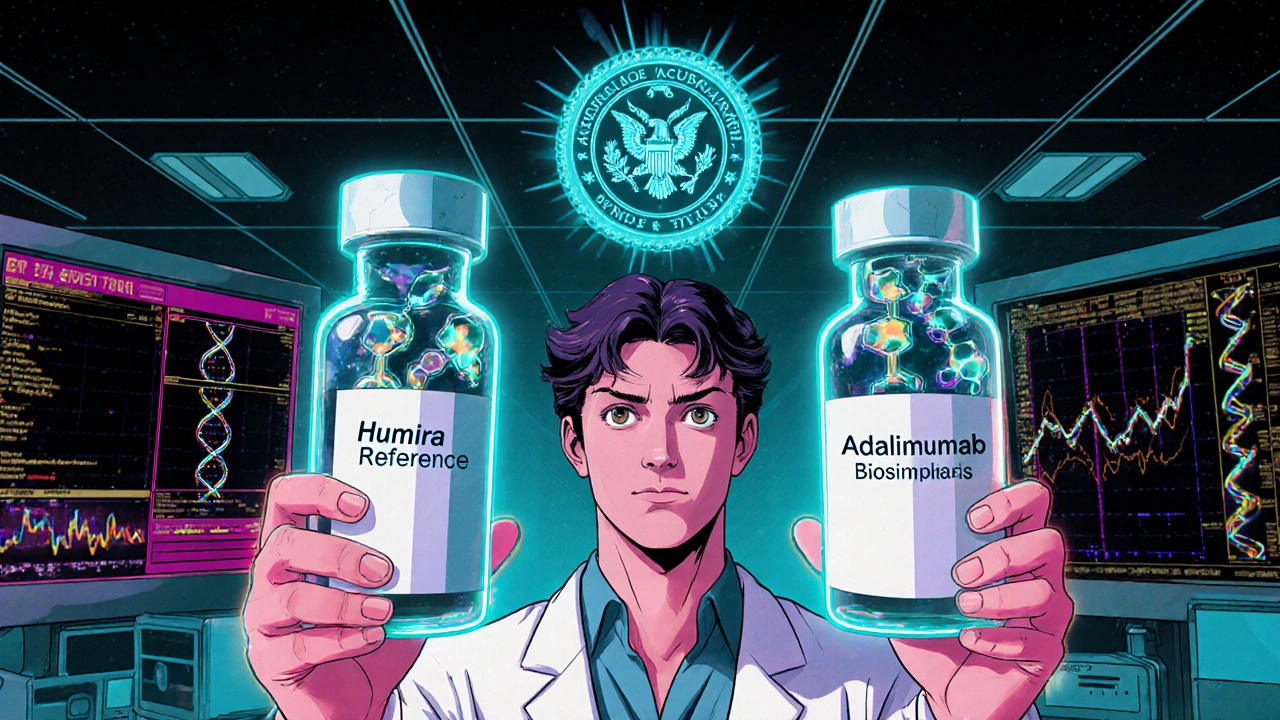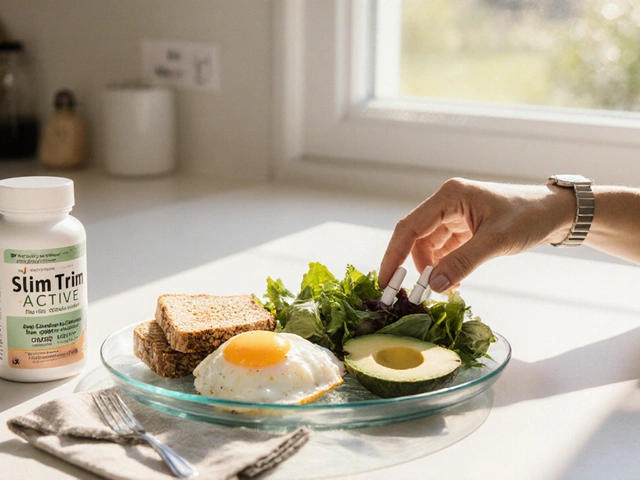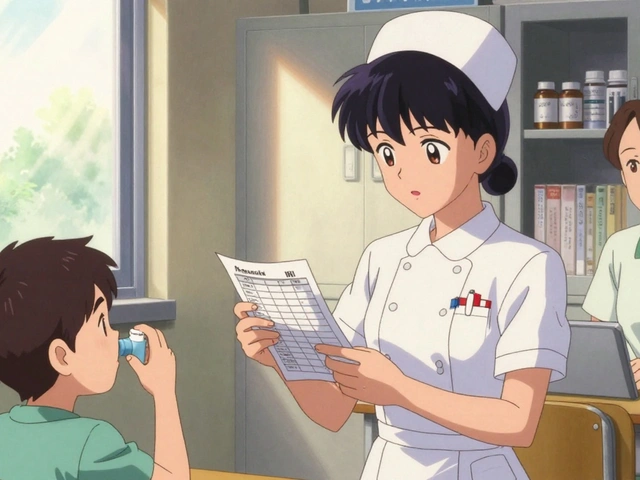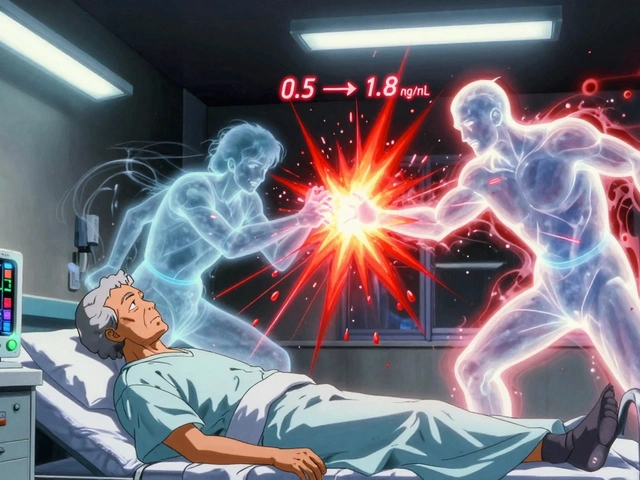Biosimilars aren’t generics. That’s the first thing every provider needs to know. If you’re used to prescribing or dispensing generic pills that are chemically identical to brand-name drugs, you’re not ready for biosimilars. These are complex biological products-made from living cells-that mimic an approved reference biologic, like Humira or Enbrel, but aren’t exact copies. The FDA says they must be "highly similar" with no clinically meaningful differences in safety, purity, or potency. But that small word-"similar"-is where confusion starts.
Why Biosimilars Are Different from Generics
Generics are made from simple chemicals. You can dissolve them, test their molecular structure, and prove they’re identical to the original. Biosimilars? They’re made in living systems-like yeast or hamster cells. Tiny changes in how they’re grown, stored, or handled can affect their shape, stability, or how the body reacts. That’s why biosimilars need 1-2 full clinical trials to prove they work the same way. Generics? One bioequivalence study is enough.Here’s the real difference: a generic aspirin and its brand version are 100% the same molecule. A biosimilar to adalimumab might have a slightly different sugar chain attached to the protein. It doesn’t change how well it works-but it does mean you can’t assume it’s interchangeable without proof.
What Providers Need to Know About Interchangeability
Not all biosimilars are interchangeable. That’s a legal and clinical distinction. An interchangeable biosimilar has passed extra studies showing patients can switch back and forth between it and the reference product without increased risk. Only 7 out of the 46 FDA-approved biosimilars in the U.S. have this designation as of late 2023.Interchangeability matters because in 42 states, pharmacists can substitute an interchangeable biosimilar without telling the prescriber-just like they do with generics. But if it’s not interchangeable, the prescriber must specifically write the brand name or biosimilar. If you’re not tracking this, you’re risking confusion, billing errors, or even patient safety issues.
And here’s the kicker: EHR systems still struggle with this. A 2022 survey found 78% of U.S. hospitals had trouble documenting biosimilar use correctly in their electronic records. Some systems lump biosimilars under the reference product name. Others don’t let you select the biosimilar at all. That means you might think a patient got the reference drug, but they actually got the biosimilar-or vice versa.
Extrapolation: Using a Biosimilar for Indications It Wasn’t Directly Tested For
You’ve probably seen a biosimilar approved for five conditions, even though it was only tested in one. That’s extrapolation. The FDA allows it if the mechanism of action is the same and the data supports it. For example, a biosimilar tested in rheumatoid arthritis can be approved for psoriasis or Crohn’s disease too.But 57% of providers still worry about this. Why? Because it feels counterintuitive. You’re used to drugs being tested for each use. But with biologics, the science shows that if the drug behaves the same way in one immune-mediated disease, it likely will in others. The American College of Rheumatology backed this with 37 clinical trials involving over 12,500 patients.
Still, you need to know: if a biosimilar is approved for a condition you’re treating, you can use it. But if you’re unsure, check the FDA label. Don’t rely on what a rep tells you-or what your pharmacy says.

Immunogenicity: The Silent Concern
All biologics can trigger immune responses. That’s why some patients develop antibodies and stop responding. Biosimilars aren’t riskier than the reference product-but they’re not identical. Minor differences in structure might affect how often antibodies form.Studies show these differences are small and don’t change outcomes. But providers who haven’t been trained often assume biosimilars are "less safe." That’s not true. In fact, a 2017 study of oncology staff showed that after 12 training sessions, provider confidence in biosimilar efficacy jumped from 40.1% to 92%.
The key is monitoring. If a patient who was doing well on a reference biologic starts losing response after switching to a biosimilar, don’t automatically assume the biosimilar failed. Look at other factors: did they miss doses? Did they start a new medication? Did they get an infection? Immunogenicity is rare-but it’s real. And you need to know how to investigate it.
Who’s Using Biosimilars-and Who Isn’t
Adoption isn’t even across specialties. Rheumatologists lead the way: 68% use biosimilars regularly. Oncologists are next at 52%. But endocrinologists? Only 29%. And insulin biosimilars have been available since 2015.Why the gap? It’s not just knowledge-it’s culture. Rheumatology and oncology practices are used to high-cost biologics and have systems in place to track them. Endocrinology? Insulin has been cheap for decades. Switching to a biosimilar feels unnecessary-even if it saves $500 a year per patient.
Pharmacists are stepping in. In hospitals where pharmacists lead biosimilar education, hesitancy drops from 58% to 12% in six months. Community pharmacists, though, still lag. Only 22% feel very confident explaining biosimilars to patients. That’s a problem. Patients hear "biosimilar" and think "cheaper version." They don’t know it’s not like a generic.
The Education Gap Is Real-and Costing Money
A 2021 survey of 102 U.S. physicians found only 38% were "extremely familiar" with the FDA’s definition of biosimilars. Sixty-three percent couldn’t tell the difference between biosimilars and generics. That’s not just ignorance-it’s a barrier to savings.The Congressional Budget Office estimates biosimilars could save $150 billion over the next decade. But those savings only happen if providers prescribe them, pharmacies dispense them correctly, and patients trust them.
And here’s the truth: younger providers know less. Dr. Andrew Kusmierczyk’s research found that providers under 40 have 40% lower familiarity than those with 15+ years of experience. That means the next generation of doctors might be even more confused unless we fix this now.

What You Can Do Today
You don’t need a PhD to understand biosimilars. Here’s what to do right now:- Know your EHR. Can you tell if a patient got the reference product or the biosimilar? If not, talk to your IT team. Ask how to tag biosimilars properly.
- Check the FDA label. Every biosimilar has a unique FDA-approved label. Don’t guess. Look up the product name on fda.gov.
- Know the difference between biosimilar and interchangeable. If it’s interchangeable, your pharmacist can switch it without telling you. If not, you must specify it.
- Use the FDA’s free resources. The FDA’s Office of Therapeutic Biologics and Biosimilars has 37 educational modules in nine languages. All free. All evidence-based.
- Start the conversation with patients. Don’t wait for them to ask. Say: "This is a biosimilar-it’s not a generic, but it works just as well and costs less. I’ve reviewed the data, and it’s safe for you."
Where to Get Trusted Education
Don’t rely on drug reps. They’re not educators-they’re salespeople. Use these sources:- FDA’s Teaching Resource Guide (12 modules, free, updated 2023)
- Arthritis Foundation Provider Toolkit (rheumatology-focused, updated Jan 2023)
- AMCP Biosimilar Education Series (covers billing, EHR, immunogenicity)
- ASBM (Alliance for Safe Biologic Medicines) (real-world data and adoption trends)
Some hospitals run 8-12 hours of training. Others do monthly 30-minute huddles. The key is consistency. One oncology center in Pittsburgh cut prescribing hesitancy from 58% to 11% in six months by having pharmacists lead weekly 15-minute case reviews.
The Bottom Line
Biosimilars are here to stay. They’re not perfect. They’re not generics. But they’re safe, effective, and saving billions. The biggest obstacle isn’t science-it’s education.If you’re still unsure whether to use a biosimilar, you’re not alone. But you’re also not powerless. Start with one step: open the FDA’s biosimilar guide. Spend 20 minutes. Then talk to your pharmacist. Then explain it to one patient.
Because when providers understand biosimilars, patients get better care. And the system works better too.
Are biosimilars the same as generics?
No. Generics are chemically identical copies of small-molecule drugs. Biosimilars are highly similar but not identical copies of complex biological drugs made from living cells. Biosimilars require more testing-typically 1-2 clinical trials-while generics only need bioequivalence studies.
Can pharmacists switch my biologic to a biosimilar without telling me?
Only if the biosimilar has FDA interchangeability status AND your state allows automatic substitution. Even then, laws vary: 12 states require immediate notification, 24 states allow 7 days’ notice, and 6 states have no notification rule. Always check your prescription label and ask your pharmacist.
Why are some doctors hesitant to prescribe biosimilars?
Main reasons include fear of immunogenicity, confusion about extrapolation (using a biosimilar for untested conditions), and lack of familiarity with EHR documentation. A 2019 study found 57% of providers worried about using biosimilars for indications not directly studied. Education reduces this hesitation-provider confidence jumps from 40% to 92% after training.
How do I know if a biosimilar is safe for my condition?
Check the FDA-approved label for the biosimilar. It will list all approved conditions, even those added by extrapolation. Look for data from clinical trials and guidelines from specialty societies like the American College of Rheumatology or American Society of Clinical Oncology. If it’s approved for your condition, it’s safe to use.
Do biosimilars cause more side effects than the original biologic?
No. FDA requires biosimilars to show no clinically meaningful differences in safety. Minor differences in immune response are possible but are within acceptable limits and don’t increase risk. Real-world data from Europe and the U.S. shows safety profiles are nearly identical to the reference product.
What’s the biggest barrier to biosimilar adoption?
Lack of provider education. Studies show only 38% of U.S. physicians are extremely familiar with the FDA’s definition. EHR systems that can’t track biosimilars separately, patient confusion, and misinformation from reps also slow adoption. But when providers get trained, use rates increase dramatically.
Where can I find free, reliable biosimilar education?
The FDA’s Office of Therapeutic Biologics and Biosimilars offers 37 free educational modules in nine languages. Other trusted sources include the Arthritis Foundation’s provider toolkit, the American Society of Health-System Pharmacists (ASHP), and the Alliance for Safe Biologic Medicines (ASBM). Avoid manufacturer-only materials-they’re often promotional.









15 Comments
Dana Dolan
Nov 19 2025Okay but like… why does everyone act like biosimilars are some new alien tech? I’ve been getting them for my RA since 2020 and my body hasn’t thrown a fit. Also, my pharmacist didn’t even tell me I switched-just handed me a different bottle. No big deal.
Codie Wagers
Nov 21 2025Let’s be real-the FDA’s definition of 'highly similar' is just corporate-speak for 'close enough that we won’t get sued.' If you think a protein with a different glycosylation pattern is functionally identical, you’re either delusional or on Big Pharma’s payroll.
Paige Lund
Nov 22 2025Wow. So much text. Can we just… let pharmacists switch it and move on? I’m tired of reading medical novels just to refill my prescription.
Michael Salmon
Nov 22 2025You people are naive. Biosimilars are a Trojan horse. The pharma giants don’t want savings-they want to lock you into a system where they control the narrative, the EHR codes, and the insurance formularies. And you’re all here arguing about glycosylation like it’s a tea party.
Joe Durham
Nov 23 2025I get the frustration, but I’ve seen firsthand how education changes minds. I work in an oncology clinic-we ran a 30-min monthly biosimilar Q&A with our pharmacists. Within 4 months, our adoption rate jumped from 22% to 76%. Patients started asking for them. It’s not about fear-it’s about clarity.
Nick Lesieur
Nov 24 2025LOL so the FDA says 'no clinically meaningful differences' but then you need 2 clinical trials? That’s not similar, that’s a whole new drug with a discount sticker. And why do we still call them 'biosimilars' when they’re basically new products? Semantics, people. Semantics.
Angela Gutschwager
Nov 25 2025My doc switched me without telling me. I found out when my co-pay dropped from $1200 to $300. 🤑 Now I’m like… why didn’t they do this sooner? Also, my skin didn’t explode. So… good job, science.
Andy Feltus
Nov 25 2025It’s funny how we treat drugs like they’re Lego blocks-snap one in, it’s the same. But biology? It’s more like origami. Fold it wrong once, and the crane doesn’t fly. Biosimilars aren’t generics because they’re not *identical*-they’re *analogous*. And that’s okay. We don’t need perfect copies. We need safe, affordable options. Maybe we need to stop expecting biology to behave like chemistry.
Dion Hetemi
Nov 26 2025Let me guess-someone in marketing coined 'biosimilar' because 'cheap knockoff' sounded too shady. And now we’re all stuck in this semantic purgatory where we have to explain that yes, it works, no it’s not a generic, and yes, your insurance will cover it if you stop asking so many questions.
Kara Binning
Nov 26 2025As an American, I find it DISGRACEFUL that we’re letting Europe lead on this. They’ve been using biosimilars for 15 years with ZERO safety issues. Meanwhile, we’re still debating whether a sugar chain is a 'clinically meaningful difference.' We’re not just behind-we’re embarrassingly behind.
river weiss
Nov 27 2025For providers: the FDA’s 37-module training is not optional-it’s essential. I’ve reviewed every module. They include case studies, EHR screenshots, and even patient handouts in Spanish, Mandarin, and Arabic. This isn’t fluff; it’s clinical infrastructure. If your hospital isn’t using this, they’re failing you.
Brian Rono
Nov 27 2025Let’s stop pretending this is about science. It’s about $$$ and turf wars. Rheumatologists? They’ve been on biosimilars since day one-because they’re tired of arguing with insurers over $10K/month drugs. Endocrinologists? Still clinging to insulin like it’s the Holy Grail because they’re scared of change. And pharmacists? They’re the unsung heroes who actually know what’s in the vial. Shame we don’t listen to them.
seamus moginie
Nov 27 2025Yeh, I read all that and still think: if it works, why are we overcomplicating it? My cousin got the biosimilar for her Crohn’s-saved her €600/month. No side effects. No drama. Just… cheaper medicine. Maybe we need less jargon and more common sense.
Zac Gray
Nov 28 2025Look, I used to be skeptical too. Then I started asking my patients: 'Do you care if it’s a biosimilar as long as it works and costs less?' 9 out of 10 said, 'Duh.' The real problem isn’t the science-it’s that we’ve trained patients to fear anything that isn’t the brand name. We need to reframe the conversation. Not as 'replacement,' but as 'upgrade.' And honestly? The EHRs are the real villains here. If your system can’t tell the difference between Humira and its biosimilar, that’s not your fault-it’s your vendor’s.
Steve and Charlie Maidment
Nov 30 2025I’ve been in this field for 20 years. I’ve seen generics come and go. I’ve seen the same panic around every new class of drug. Remember when people thought statins would turn your liver into a brick? Biosimilars are the same story-fear of the unknown. The data is solid. The real issue? We’ve made medicine too complicated for its own good. Let’s stop treating patients like they need a PhD to get their meds. Just give them what works. And if it saves money? Even better.